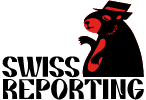Now Reading: Swiss Franc Hits Record High Amid Global Economic Uncertainty
-
01
Swiss Franc Hits Record High Amid Global Economic Uncertainty
Swiss Franc Hits Record High Amid Global Economic Uncertainty

Swiss Franc Hits Record High Amid Global Economic Uncertainty
Background
The Swiss franc (CHF) has long been considered a safe-haven currency during periods of financial turbulence. Traditionally, investors turn to the franc during times of global instability and market volatility, attracted by Switzerland’s steady political environment and robust financial sector. Over the past decade, episodes such as the eurozone crisis and the COVID-19 pandemic have repeatedly highlighted the currency’s appeal.
What is happening now
This week, the Swiss franc surged to new record highs against both the euro and the US dollar. The move comes amid heightened global economic uncertainty, with ongoing concerns about inflation, slowdowns in key economies, and geopolitical tensions in Eastern Europe and the Middle East. According to market data, the CHF briefly traded below 0.97 against the euro and approached parity with the dollar, sparking renewed attention from investors and monetary authorities alike.
Impact on Switzerland
While the currency’s strength reflects investor confidence in Switzerland, it also poses challenges. Swiss exporters—particularly in sectors like machinery, electronics, and luxury goods—may face stiffer competition abroad due to higher prices in international markets. Meanwhile, Swiss consumers could benefit from cheaper imports, potentially reducing inflationary pressures within the country. The Swiss National Bank (SNB) continues to monitor currency movements closely and has not ruled out intervention to ensure price stability.
- Exporters face headwinds from stronger franc
- Imported goods potentially cheaper for Swiss consumers
- SNB may adjust policy if currency strength persists
What happens next
Analysts expect continued volatility in currency markets as global economic uncertainty persists. The Swiss National Bank is likely to remain vigilant and could introduce measures if the franc’s appreciation endangers economic stability. Export-driven sectors will be closely watched for signs of pressure, while investors will monitor signals from central banks worldwide for the next moves that may impact currency flows. For now, Switzerland’s role as a safe-haven remains firmly in focus.

















